
As a former public school tutor and county literacy volunteer, there is a special place in my heart for bilingual books and storytelling. Adjusting to a new country is challenging enough but learning a new language on top of those challenges is quite overwhelming. I think many of us would struggle. Seeing a story written side-by-side in my native language would most certainly help. Hearing stories from my native home in the new language could help me embrace both my former and current home. This month's ChildrensLit Now newsletter features the importance of providing bilingual books in library collections. It also pays tribute to the admired library storyteller and author of blingual books, Pura Belpré, and the 25th anniversary of the book award named after her.
Shelley Oakley
Director, Children's Literature
Subscribe to ChildrensLit Now Newsletter
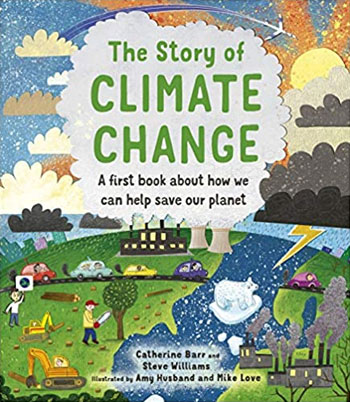
Here is a fantastic primer for young children on the issues surrounding climate change. It takes a comprehensive look at how the earth began, developed and changed, and how humans have impacted the world throughout history. A helpful timeline runs through the book to help children place these events in sequence. Bright and bold illustrations tell a story that support the text and engage the reader. The book quickly reaches the present day, to show the ways in which humans have had the most impact on climate change. While highlighting the problems of climate change, this book also works to show the scientific discoveries that have helped, and are helping, to slow this change. The book also emphasizes what people, especially young people, are doing to change our habits and campaign for better treatment of the earth. Hopeful but realistic, this book is a great starting point for young children to learn about the world they live in.
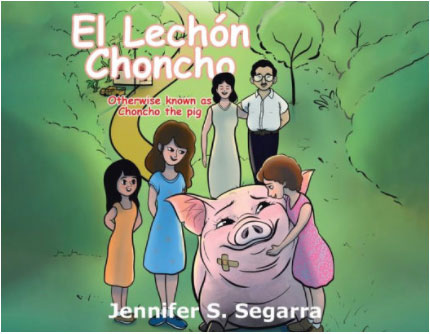
Family history can make for some of the most delightful bedtime stories. Sisters Anna and Antonia Ortiz are too excited to sleep. In the morning, they will get on an airplane with their family to visit their Abuela on her farm in Mayagüez, Puerto Rico for the very first time. While their baby brother Miguel gets his diaper changed, the girls implore their Mami to recount the story of El Lechón Chencho, a dear friend from Mami's childhood. Mami finally acquiesces, filling the girls' minds with visions of Abuela's farm in preparation for their upcoming trip. Cheerful, digitally rendered illustrations set the stage for this delightful story. Using intentional color and design, readers are transported to a Puerto Rican farm surrounded by a verdant landscape and native flora. While most of the images utilize blocks of solid color, shading and occasional textures add depth to the pictures. The excitement the girls feel in anticipation of visiting their Abuela is palpable in their demeanor as they jump unabashedly on their beds with their suitcases lying in wait on the floor nearby. Each spread is divided, featuring a large image on one side with ample dialogue and narration on the other. Due to the quantity of text, this story is best suited to readers with longer attention spans, but its direct and action-focused presentation increases the book's accessibility. Spanish words are included frequently within the narrative and stand out in italics from the surrounding text. While there is no glossary included, these words are immediately translated into English as an innate element of the story. No matter a reader's understanding of Spanish, this tale of a heroic, larger-than-life pig is an enjoyable addition to libraries for young children.
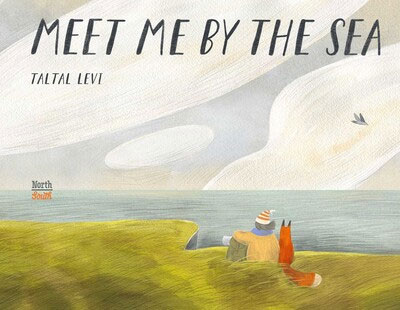
From Israeli author-illustrator Taltal Levi, "Meet Me by the Sea" opens on a child, who feels ready for adventure, and their parents, who are too busy to notice. Not one to let a challenge stand in their way, the child leaves a note by the door and sets out on their own towards their "favorite place." Beautiful pastel tones depict equally stunning rivers and woods on the child's path towards the sea. Levi's detailed drawings add excitement to this simple story; the birds and animals create a sense of depth and character, as does the overnight scene in the center of the book. Alone in the dark, the child models bravery and independence as they roll out their sleeping bag and prepare for a night in the woods. The child's bravery is rewarded—thankfully—with a gorgeous sunrise and a special, cuddly surprise that has joined them overnight. The joy of this scene continues through the end of this short picture book until, finally, the child's parents meet them by the sea. Although the vocabulary in this book is quite advanced for its length, it would be an excellent sample text for a kindergarten or first grade lesson on scientific exploration. The social-emotional potential also abounds, providing caretakers and educators points of departure for conversations on bravery, independence, and loneliness. A soft-spoken marvel.

A walk in the woods provides ample opportunity for an African American brother and sister to explore their feelings in this gentle, family-centric adventure story. Rosa and Travis are enjoying a walk with their mother when they spy a baby rabbit dark into its burrow. Observing that it's "very dark" in the hole, Travis asks whether it is scary. His mother reassures him that the hole is the bunny's home, a "very, very nice place" where she lives with her family. As such, it isn't scary to her. The pattern is set—the children see an animal, ask about its scary-seeming home, and receive reassurance from their mother—and it is repeated as the observant children encounter a squirrel in a tree, a frog in a swamp, a fish in a pond, a baby deer in the woods, a baby goose in the sky, and a bat in a cave. Finally, it is time for the family to return home. After a bedtime story, it's time to turn out the lights. Travis wonders if being in the dark will be scary, but big sister Rosa reassures him, and it's "Good Night" time for everyone. Hamilton demonstrates a keen understanding of the mix of curiosity and concern many young children feel as they have new experiences in the world around them. The illustrations are created with a soothing palette of browns, golds, and blues. This gentle picture book is especially well-suited for sharing as a bedtime story read-aloud; observant children will be thrilled to see that this book makes a cameo appearance as the bedtime story read to Rosa and Travis by their mother, and that many of the animals the children have observed appear in a poster on the children's bedroom wall. This celebration of curiosity, family, and the home is recommended for public libraries and family collections.
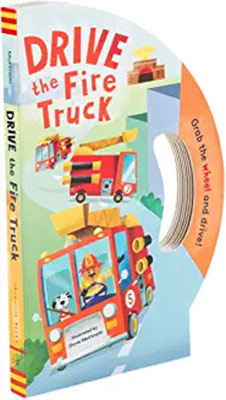
Answer the call and get ready to drive the fire truck, with this steering wheel-shaped board book! The reader is in the role of a firefighter who is getting the fire truck ready when a call comes in about a fire in the neighborhood. Push a button on the dashboard and a siren on the top of the truck blares, so that cars on the road move out of the way and the fire truck can pass. Check for traffic before going straight through the center of the city. Press the button to honk the horn and turn left at the light. Park the truck near the fire, pull out the ladder, and get the hoses to put out the flame! The firefighting team works hard to keep the people safe! Colorful and detailed illustrations of the inside of a fire truck's dashboard, the streets of a city, and other trucks and cars, along with the shape of the book are sure to engage young truck enthusiasts. Readers can pretend to press the button on the radio, press go, press the button for the horn, turn on the sirens, and extend the ladder. The firefighters illustrated in the book are diverse in skin color and gender. An interactive and exciting read for young children.
The Importance of Bilingual Books for Children

Lucia M. Gonzalez knows an abundance about the impact of bilingual books. An accomplished storyteller, puppeteer, children’s librarian, and author, Lucia has been a champion for bilingual books and programming for many years. She was president of REFORMA from 2010-2011 and, in 2020, was elected as president of the Association for Library Service to Children (ALSC). She has written three bilingual books for children, including two Pura Belpré Award Honor winners. Lucia is also the library director for the North Miami Public Library.
What impact does a strong bilingual collection in the public library have on a community?
Lucia: Bilingual books serve a primordial function in the pre-readers’ transition from the home language and the home culture to the larger society. Bilingual books help connect generations of readers by allowing caregivers who might not be fluent in the English language to share the joy of reading a book to their children in the language of their choice and in the comfort of their language. Bilingual books are essential in promoting family literacy and cross-cultural understanding. They validate the first language and the bicultural experience.
How do bilingual books benefit the growth of a child who lives in a home with parents who speak a child’s native language but goes to an English-speaking school?
Lucia: As I mentioned earlier, bilingual books are instrumental in validating the child’s home cultural and linguistic identity, serving as great connectors to the wider world. There is nothing more gratifying than the feeling of belonging, of being noticed and appreciated for who you are and for what you are able to contribute to the group, the class, or society at large. A child growing up in a home where the home language is other than English and the culture is other than the mainstream culture feels a sense of great disconnect and a craving for belonging when attending school where everyone else seems different. Imagine the joy of that child when he hears others outside his home reading in the home language. Imagine how gratifying it must be for that child to see the classmates interested in the sounds of the words that are so familiar to that child’s daily life. It is a moment of joy, of self-pride, and most importantly, it is a moment of bonding. Also, the availability of bilingual books within a library’s collection invites the non-bilingual reader to get a glimpse of other languages and cultures that co-exist in their communities and their classrooms. For me, as a bilingual author, parent, and children’s librarian, bilingual books are about intergenerational bonding and cross-cultural inclusiveness.
What should librarians and teachers look for when selecting bilingual books?
Lucia: The selection of bilingual books should meet the criteria and high standards of quality that we apply to any other book we select for our collections. Language barriers do represent a challenge when the selector does not speak the language featured in the bilingual book, and it is the responsibility of the selector to seek reviewers that are experts in that language or to seek published reviews of the titles under consideration. The literary quality, the flow of the story, the rhythm, the voice, and the age-appropriateness of one language must be retained and reflected in the other. One reading should flow into the other seamlessly. For me, the best renditions are those in which the author creates both versions.
There are many resources available to help with selecting books published in Spanish/English, starting with the now extensive bibliography of recipients of the Pura Belpré (http://www.ala.org/awardsgrants/awards/4/all_years), the Americas (http://claspprograms.org/pages/detail/68/Award-Winners), or the Tomás Rivera (https://www.education.txstate.edu/ci/riverabookaward/) book awards. Another great place is ALSC’s DIA website (http://dia.ala.org/).
This year marks the 25th anniversary of the Pura Belpré Book Award, an award that honors the work of librarian and storyteller Pura Belpré. What does the longevity of Belpré’s name and work say about the need for bilingual books and programming?
Lucia: In 1921, Pura Belpré was hired by New York Public Library to serve the growing Spanish-speaking community in a section of Harlem that later became known as Spanish Harlem, or “el barrio.” When perusing through the shelves of her library, Pura wished with all her heart to be able to offer the parents and the children of the community she served the books that included their stories, their cultural heritage, and their language. The fact that her first book, Perez and Martina (Frederick Warne & Co. 1932), remained in print for generations to come is a testament to the history of, and the need for, bilingual books and programming.
What trajectory would you like to see children's literature take in 2021 and moving forward? What trajectory would you like to see YA literature take?
Lucia: I've always believed in the power of books to shape the minds of young readers. Some writer friends have told me how much the pandemic and so many other events in the real world have shaken their ability to write or their faith in the craft of writing itself. So, I don't know that I have a straightforward answer to that question at all. What would I like to see? I know what I think we need. We need books that make bold, imaginative leaps. We need ways to find joy and community while refusing to be blinded by nostalgia for a past that never really existed. Two books by writers I'm proud to count as friends and colleagues contain great lavish helpings of all those elements: A Sitting in St. James by Rita Williams-Garcia, and Sisters of the Neversea by Cynthia Leitich Smith. The first is a YA novel, an epic multi-generational story of life, death, crime, love, survival set against the astonishingly vivid background of a declining antebellum Louisiana plantation. In the other, a middle grade novel, Lily and Wendy reclaim the Peter Pan universe, speaking back to the canon with humor and grace. Back in 2019, I wrote an article in The Horn Book back calling for diverse books to be more than windows and mirrors—I argued they can also work as prisms that refract the light of their characters and themes and cast them back upon the real worlds of readers. Both these books do that in very different ways. So, I'd argue that windows and mirrors are necessary but as the world gets increasingly complicated, representation is not enough. I'll be looking in 2021 for more books that act like prisms.
Pura Belpré Award Celebrates 25 Years
2021 marks the 25th anniversary of the Pura Belpré Book Award, named after Pura Belpré, the first Latina librarian at the New York Public Library. Established in 1996, this award is presented annually to a Latinx writer and illustrator whose work best portrays, affirms, and celebrates the Latino cultural experience in an outstanding work of literature for children and youth.
Pura Belpré's legacy lives on not only through this book award but through the many librarians who reach out to their communities sharing the knowledge that the public library is for all, regardless of race, nationality, economic status, or ability to read. There is no price that can be placed on storytime, literacy programs, and other public library programs that help non-English speaking community members.
Co-sponsors of the award: Association for Library Service to Children (ALSC) and Young Adult Library Services Association (YALSA)- divisions of the American Library Association (ALA), and REFORMA, the National Association to Promote Library and Information Services to Latinos and the Spanish-Speaking, an ALA affiliate.
The Celebration for the 25th anniversary and the 2021 award recipients will take place on Sunday, June 27 at 1:00 PM CST as part of the ALA annual conference.
2021 winners
Children's Narrative
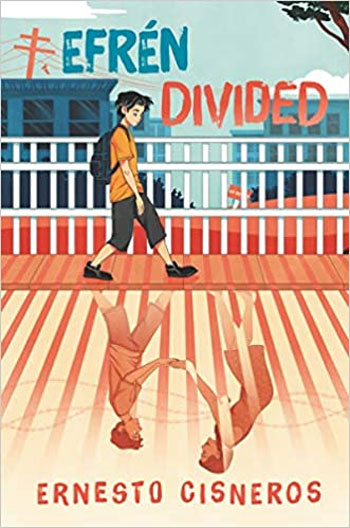
Efrén Divided
By: Ernesto Cisneros
While his father works two jobs, seventh-grader Efrén Nava must take care of his twin siblings, kindergartners Max and Mia, after their mother is deported to Mexico.
2021 winners
Youth Illustrator
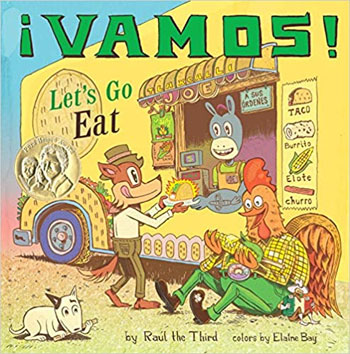
¡Vamos! Let's Go Eat
By: Raúl the Third
Little Lobo, a Mexican American, and Bernabé, his dog, gather tacos, frutas picadas, cuernos, and more and deliver them to los luchadores preparing for Lucha Libre 5000.
2021 Winner
Young Adult Narrative
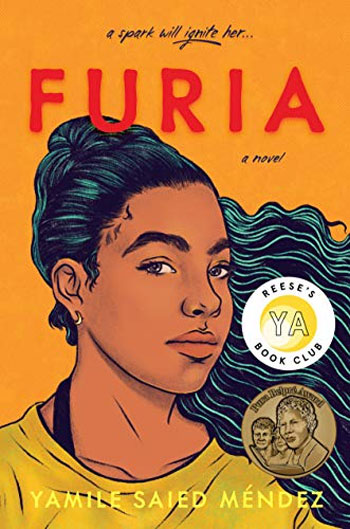
Furia
By: Yamile Saied Méndez
In Rosario, Argentina, Camila Hassan lives a double life. At home, she is a careful daughter, living within her mother's narrow expectations, in her rising-soccer-star brother's shadow, and under the abusive rule of her short-tempered father. On the field, she is La Furia, a powerhouse of skill and talent. When her team qualifies for the South American tournament, Camila gets the chance to see just how far those talents can take her. In her wildest dreams, she'd get an athletic scholarship to a North American university. But the path ahead isn't easy. Her parents don't know about her passion. They wouldn't allow a girl to play futbol - and she needs their permission to go any farther. And the boy she once loved is back in town. Since he left, Diego has become an international star, playing in Italy for the renowned team Juventus. Camila doesn't have time to be distracted by her feelings for him. Things aren't the same as when he left: she has her own passions and ambitions now, and La Furia cannot be denied. As her life becomes more complicated, Camila is forced to face her secrets and make her way in a world with no place for the dreams and ambition of a girl like her.
★ Did you know that ChildrensLit reviews Spanish/English bilingual books? If you are a publisher who has published Spanish/English bilingual books in the last year, contact shelley.oakley@childrenslit.com to get your new books reviewed.
★ Are you an indie author or a traditional published author who has recently self-published? If so, check out the Children's Literature Indie Author Promotions Service. This service includes your book's entry in Children's Literature Comprehensive Database (CLCD), a book review, participation in the new Children's Literature Booking Service (coming August 2021), and more. For more information, visit https://www.childrenslit.com/indie-authors.